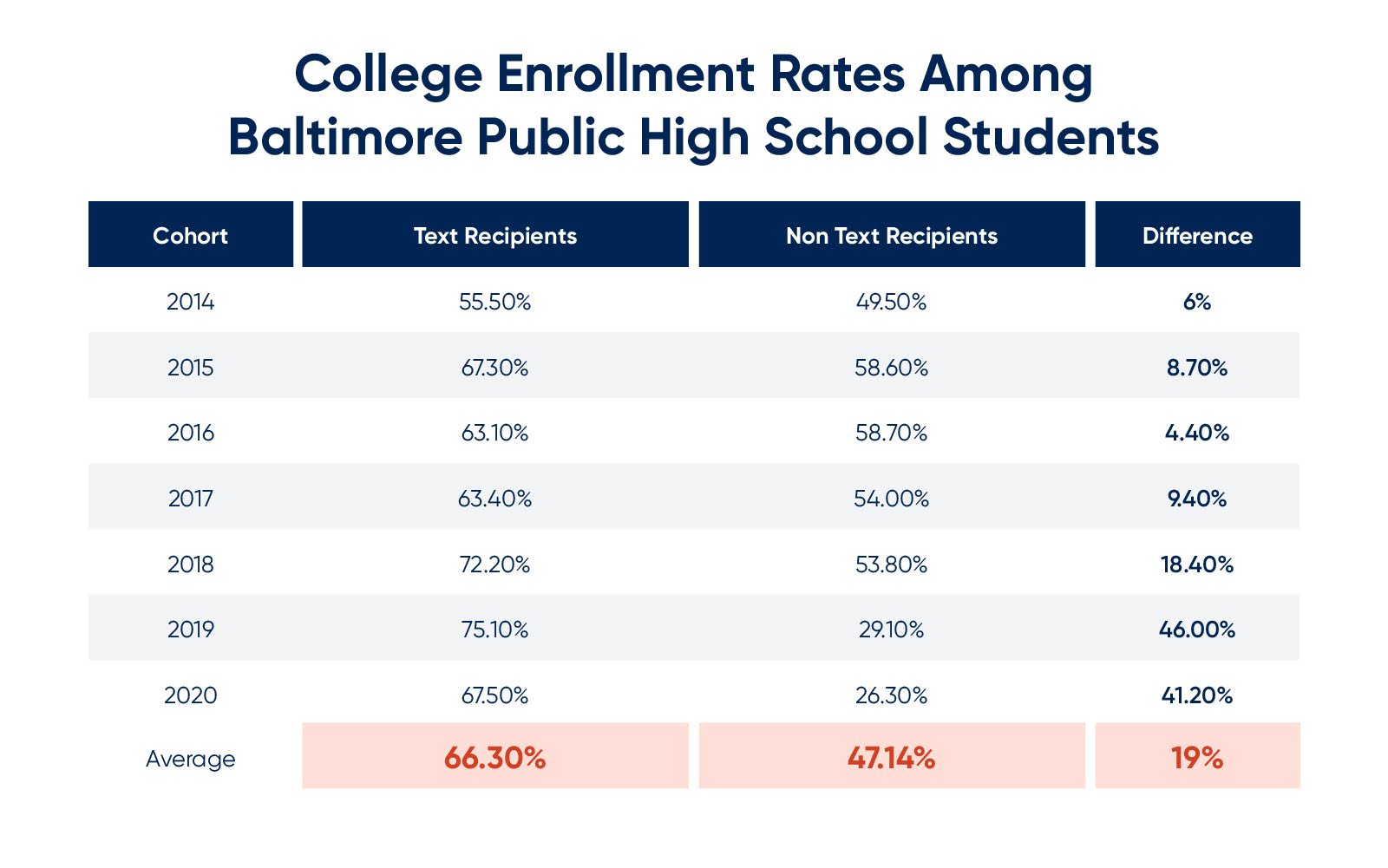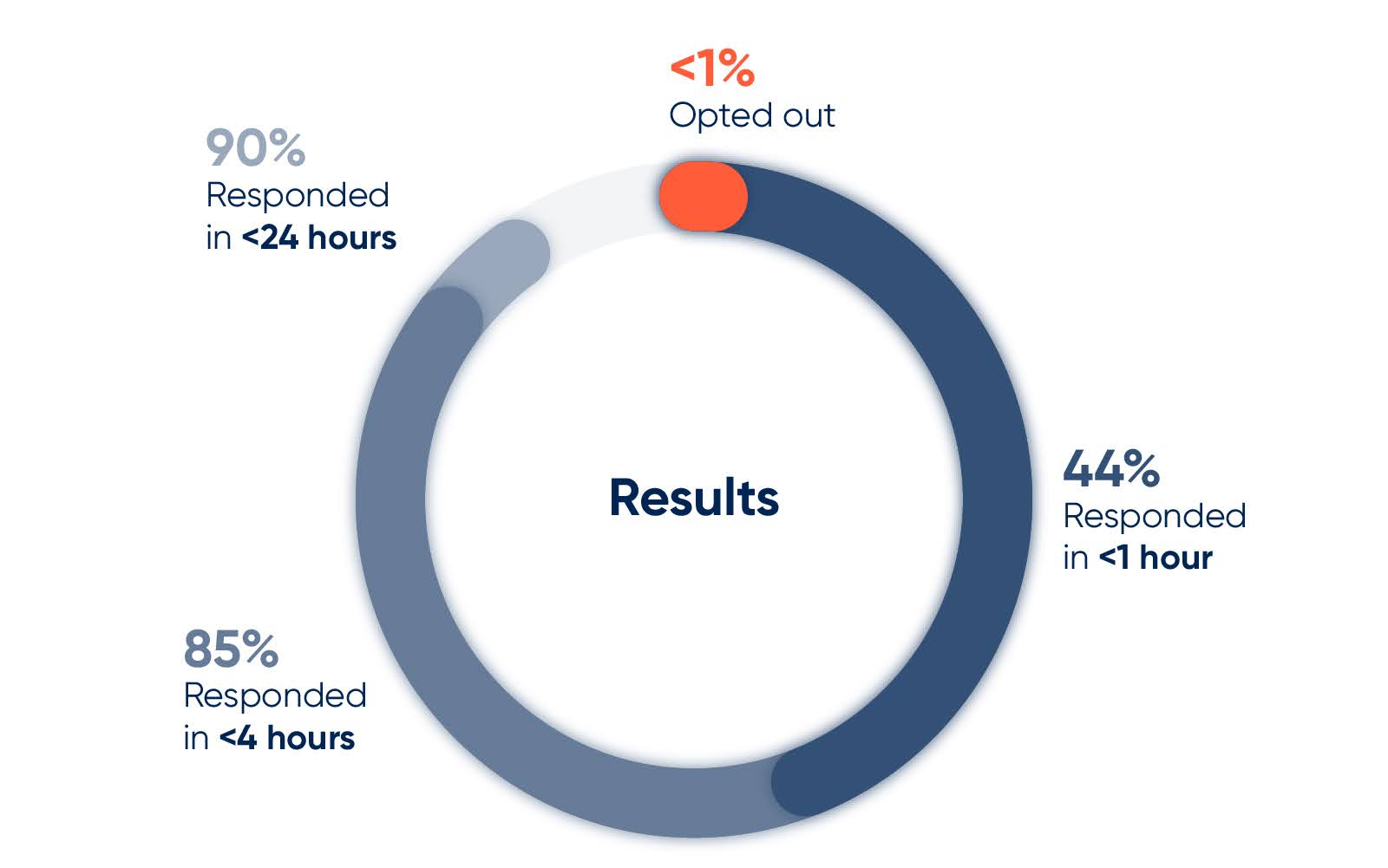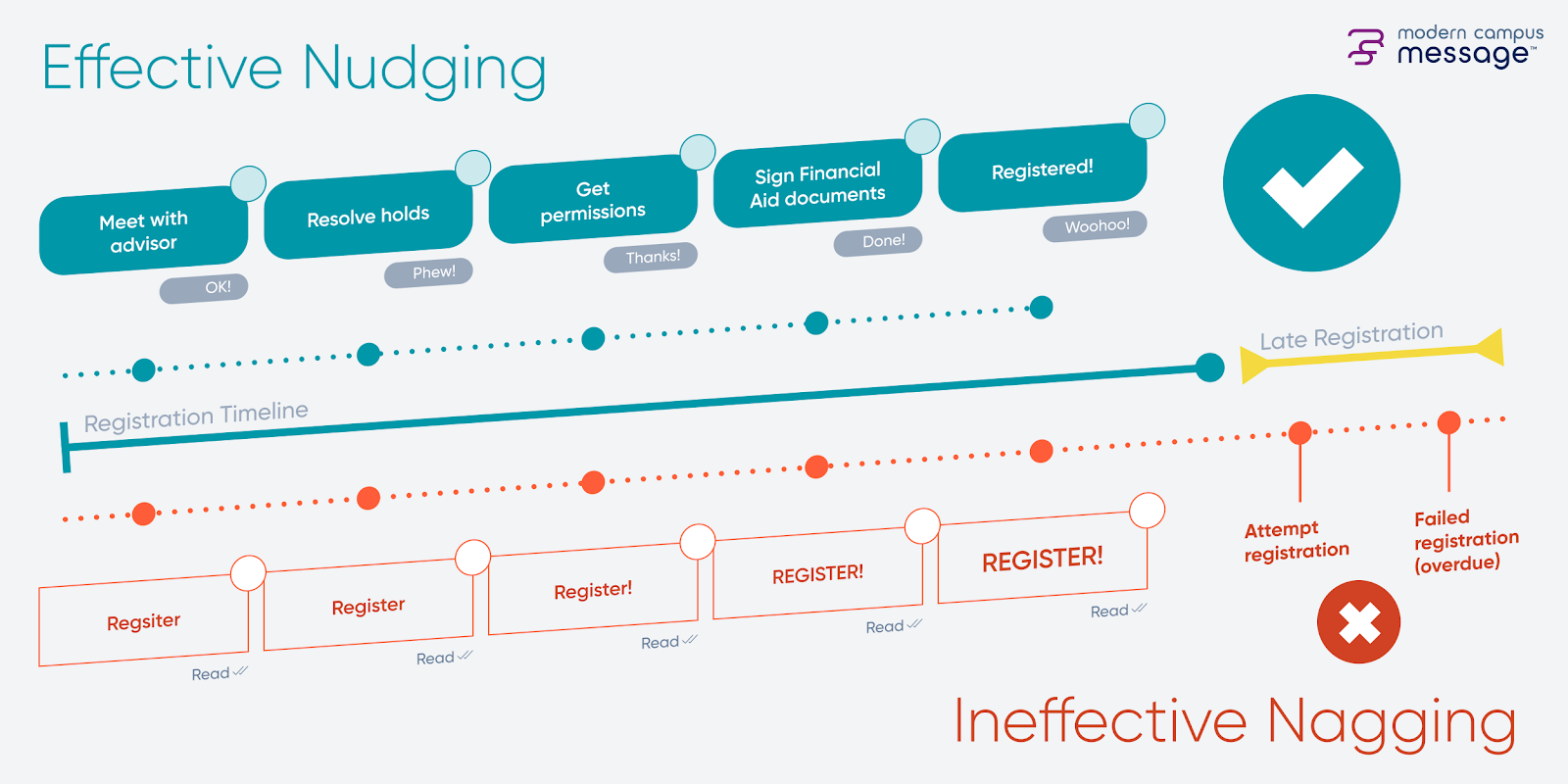10 Ways Your College or University Can Reduce Summer Melt Through Texting
Picture students brimming with excitement. They secured their spot at a college or university…only to never show up when fall arrives. This phenomenon, known as Summer Melt, affects thousands of students every year, quietly eroding enrollment numbers and derailing academic dreams before they even begin.
Summer Melt occurs when college-bound students who have been accepted, committed and even paid deposits fail to enroll in the fall. It disproportionately impacts first-generation students, those from low-income backgrounds and students navigating complex personal circumstances. Despite their initial enthusiasm, these students often encounter barriers like confusing paperwork, financial aid challenges or simply a lack of support during the critical summer months.
The good news? Institutions can take proactive steps to reduce Summer Melt. By leveraging strategic communication tools—like timely, personalized text messaging—colleges can maintain meaningful connections with students, guiding them through the final steps toward enrollment. Taking a proactive approach boosts matriculation rates and sets the stage for long-term student success.
The Hidden Hurdle: Why Committed Students Disappear Before Day One
Summer Melt refers to the phenomenon where high school graduates who have been accepted to college and intend to enroll fail to do so. This can occur due to various reasons including lack of support and guidance, student uncertainty and anxiety, financial barriers, communication gaps and administrative hurdles.
For many high school graduates, the transition from high school to college is fraught with challenges that can derail their plans. Without the structured support they had in high school, these students may find themselves overwhelmed and unsure of how to proceed.
Statistics on summer melt rates
According to research, between 10-40% of high school graduates who intend to enroll in college never manage to do so. This phenomenon is more prevalent among low-income students, students in large urban districts and community-college-bound students.
Summer Melt can have a significant impact on higher education institutions, resulting in lost revenue and decreased enrollment. For college-bound students, the summer months can be a critical period where the lack of support and resources can lead to a change in plans, ultimately affecting their educational trajectory.
Consequences of summer melt on students and institutions
Summer Melt can have severe consequences for both students and institutions. For students, it can mean delayed or foregone educational opportunities, which can have long-term effects on their career prospects and earning potential.
For institutions, summer melt can result in lost revenue, decreased enrollment and a negative impact on their reputation. Higher education institutions rely on a steady stream of incoming students to maintain their programs and services. When students fail to matriculate, it disrupts this balance and can lead to financial and operational challenges.
10 Reasons Why Students Succumb to Summer Melt & What You Can Do About It
The majority of college students who fail to matriculate do so not because they had a change of heart but because they encounter logistical or emotional barriers and lack the knowledge or support systems needed to overcome them.
To ward off Summer Melt, your institution should fill these knowledge and support gaps. One simple but effective way to do so is through conversational text messaging. By reaching students through their favorite mode of communication—their phones—you can direct thousands of incoming students to the right support services. Just as importantly, you can show that your institution cares about their well-being and success.
To craft the right message, you first need to understand the barriers that cause Summer Melt. Here are ten of the most common challenges today’s learners face, along with how you can address each concern head-on via higher ed texting software.
1. Lose of access to school counselors
Many first-generation students relied on high school counselors to guide them through the college research and application process. Without these counselors, who are typically unavailable in the summer, students may not have any mentors to turn to for general advice, emotional support and logistical guidance.
How your texts can help: Automated texts, supplemented with hyper-personalized messaging, can show students that they do indeed have a guide: You. Texts can help students solve immediate challenges and reassure students that they’ll have accessible support in the future—right from their phones.
2. Lack of social capital
Social capital involves intangible resources that come embedded within interpersonal relationships or social institutions. Many students—such as those whose parents and older siblings went to college, attend wealthy high schools wherein college attendance is the norm and have many social media connections with higher ed—are rich in social capital.
However, many other learners lack social capital, which may inhibit their enrollment and ultimately their ability to attend college. This can significantly contribute to Summer Melt, as students without strong support networks often struggle to navigate complex enrollment processes and may feel disconnected or overwhelmed during the critical summer months.
How your texts can help: By texting a student, you’ll instantly increase their social capital. What’s more, you can connect learners to additional resources, experts and communities to expand that capital further. Be sure not to assume; err on the side of over-explaining processes, procedures and expectations that will be new to many of the young adults you’re texting.
3. Complex financial aid forms
Financial aid forms like FAFSA are challenging for even the most well-informed students to complete. And for students without social capital or knowledgeable advisors to guide them, FAFSA can seem like a cruel, impossible test—one that they’re being set up to fail.
Students may melt away because they are unable or too intimidated to complete FAFSA or fill it out incorrectly, leading to a less-than-desirable financial aid offer.
The recent overhaul of FAFSA aimed to simplify the financial aid process for students. However, the rollout was plagued by delays and technical issues, including problems that blocked some students from starting or completing their applications.
These challenges led to a 9% decline in submitted FAFSA applications among first-time applicants, with the largest declines among lower-income students. The Department of Education's lack of timely support and clear communications further exacerbated confusion among applicants.
How your texts can help: Encouraging students to ask questions about FAFSA and reveal what’s tripping them up can help them complete the form and feel confident about the accuracy of their answers.
4. Other form complications
If only matriculating meant pressing a single “start college” button.
High school students often face administrative hurdles, such as forms related to their medical and vaccine history, housing preferences, state residency, high school test scores and more, which may also inhibit enrollment. To complete these forms, students will have to contact their doctor, research housing costs, secure proof of residency, hunt down their testing scores and deal with other logistics that may understandably confuse or intimate them.
How your texts can help: Provide advice on how to complete these forms and secure requested documents. Taking some of that weight off a student’s shoulders may be all they need to complete a form that finalizes their enrollment.
5. Financial concerns
Even if a student understands the costs of tuition prior to applying to your institution, they may feel blindsided by additional expenses like housing, books and student activity fees.
Additionally, their plans to pay may fall through during the summer; perhaps they struggle to find a part-time job, acquire unexpected medical expenses or don’t receive as generous a financial aid package as they had expected.
How your texts can help: Connect students with additional aid opportunities, advise them on personal financial strategies and suggest cheaper alternatives, such as used books or library loan options.
6. Logistical challenges
Barriers in a student’s personal life may arise over the summer that lead a student to worry about their ability to succeed at your institution. They may lose access to reliable transportation, acquire a part-time job with hours that seemingly conflict with class, be expected to care for an elderly family member or struggle with their mental health.
How your texts can help: Talk students through their options, such as public transport, night classes and mental health services. Assure learners that these common challenges do not have to block the road toward their degree attainment.
7. Missing email and snail mail
If your institution relies on email and/or ye olde postage mail to communicate, then some students may miss vital messages. Perhaps they’ve moved and forgot to inform the institution of their new address, lost access to email or simply confused your messages with spam. All of these occurrences can lead a student to miss crucial steps toward matriculation.
How you can help via text: Your texts are likely to reach and engage way more students than email or physical mail. According to the Statista Global Consumer Survey 2021, more than 99% of college students in the US own a smartphone and most are using them for educational purposes.
8. Worries about social fit
With their high school friends off to other institutions, incoming students may question their ability to form new social networks on your campus. They may worry about how they'll have fun, get along with their roommate(s), find like-minded peers or engage in co-curricular programming.
How you can help via text: Inform students of social opportunities, such as student clubs and orgs, campus events and networks of students on social media. Consider collaborating with Student Affairs to get the right messages out. Residence Life and Housing can also help answer students' concerns about roommates and social opportunities within the residence halls.
9. Missing orientation
College students may not know that they have to sign up for orientation, they may struggle to find transportation to campus or they may simply forget to show up—all of which can mean they'll fail to register for classes and gain critical social capital for success.
How you can help via text: Remind students to register, answer their questions about orientation’s importance, provide links to public transport options and send timely reminders just before the big event.
10. Concerns about academics
First-generation college students may begin to worry about their academic fit over the summer. They may become intimidated by course descriptions and syllabi, be disheartened to discover that they need to take remedial courses or struggle to get through pre-assigned reading.
How you can help via text: Inform students of academic and co-curricular support services and how they’ll be able to access them, on campus and digitally. These can include the writing center, tutoring and even student organizations focused on particular academic fields and professions.
Supporting Students After High School Graduation
To prevent Summer Melt, provide students with support and guidance after high school graduation. Collaboration between school counselors and college staff enhances this effort. School counselors can provide students with information and resources to help them navigate the college enrollment process, while college staff can offer support and guidance to help students transition to college life.
By working together, counselors and college staff can help students overcome the challenges that can lead to Summer Melt. For example, they can provide students with information about financial aid and help them complete financial aid forms. They can also offer support and guidance to help students navigate the college enrollment process, including providing information about local colleges and universities.
Nudge, don’t nag
The great majority of students find messaging from their colleges or universities helpful; 86% of students say that texts have prompted them to successfully complete a task.
These tasks can be steps toward matriculation. From 2014 to 2020, the CollegeBound Foundation found that students who received texts were 19% more likely to enroll in college than those who did not engage with texting. In 2019, that number was even higher: 46%!

What’s more, 90% of students responded to CollegeBound’s texts within 24 hours and only 1% opted out.

Key to this success was CollegeBound’s focus on relationship-building and support. Texts conveyed a genuine concern for each recipient, with staff expressing curiosity about the challenges students were facing rather than impersonal reminders. In other words, students were nudged not nagged.
As explained in Nudging by Text Best Practices:
Nudging is broadly defined as “coaxing or gently encouraging someone to do something.” In the context of education, nudging is specific communication that helps move a student through their educational journey.

In the paper Summer Nudging: Can Personalized Text Messages and Peer Mentor Outreach Increase College Going Among Low-Income High School Graduates?, researchers Benjamin L. Castleman and Lindsay C. Page found that the answer to the titular question is a resounding yes.
They theorized that:
“The text messages may impact students’ college outcomes simply by nudging them to complete required tasks at the appropriate time during the summer. Personalized messaging effectively may turn adolescents’ greatest liability during the college choice process—their impulsiveness—into an asset. By providing simplified information and task-specific links, each message potentially allows completion of required steps in the moment, before students’ attention is otherwise diverted.”
Sealing the Deal: Turning Intent into Enrollment
Reducing Summer Melt demands action. Key strategies include building social capital through proactive communication, offering clear guidance on complex processes like financial aid and maintaining consistent support during the critical summer months. Personalized text messaging has proven to be a game-changer, bridging the gap between students and institutions and ensuring that no student feels lost or disconnected.
Modern Campus Message empowers institutions to harness the full potential of mass text messaging. With features that allow for automated yet highly personalized communication, you can segment audiences, tailor messages to meet individual student needs and maintain engagement at scale. Students receive timely reminders, critical information and the encouragement they need to follow through on their college commitments. Request a demo today and discover how you can keep more students on track to achieve their academic goals.
Last updated: July 1, 2025




